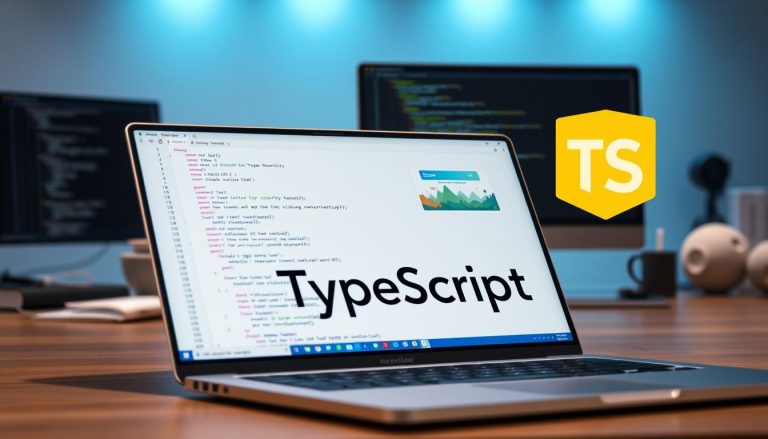Best VSCode Alternatives: Features, Pros, and Cons Explained
What if the most popular tool isn’t always the best one for your specific job? Many developers default to Visual Studio Code without considering whether another code editor might better suit their workflow.
We explore why even excellent tools have limitations. While powerful, Visual Studio Code can be resource-heavy or lack specialized features for certain projects. This creates an opportunity for other options to shine. Our guide provides a detailed comparison of leading editor choices. We examine lightweight text editors, full-featured IDEs, and specialized environments. Each tool is evaluated on performance, customization, and language support.
This helps developers make informed decisions. We break down the features, pros, and cons of each alternative. Our goal is to simplify your search for the perfect code writing tool.
Key Takeaways
- Popular tools like Visual Studio Code may not fit every developer’s needs.
- Alternative code editors often offer better performance or specialized features.
- Evaluation criteria include speed, customization options, and language support.
- This guide compares options across different categories, from lightweight to full IDEs.
- Understanding the pros and cons helps you select the best editor for your projects.
Introduction to the Product Roundup of Coding Editors
Modern software development requires specialized tools that adapt to varying project demands and personal preferences. We recognize that different programming tasks call for distinct editing environments.
Understanding the Need for Alternatives
Developers seek alternatives for several compelling reasons. Performance optimization remains a primary concern, especially when working with resource-intensive projects.
Some professionals require specialized functionality beyond basic editing capabilities. Others prioritize privacy and open-source transparency in their development tools.
Overview of What Makes a Great Editor
A superior code editor balances multiple essential attributes. Performance and responsiveness form the foundation of any quality editing experience.
Extensibility allows customization through plugins and extensions. Strong language support ensures smooth workflow across different programming paradigms.
The best code editors integrate seamlessly with development ecosystems. They provide intelligent features while maintaining clean, efficient operation.
Why Developers are Exploring New Code Editors
A primary driver for developers to evaluate new editing environments stems from performance bottlenecks encountered in daily use. Even powerful tools like Visual Studio Code can struggle under specific workloads.
Performance Considerations and System Demands
Memory consumption is a frequent concern. Running multiple extensions simultaneously can significantly increase RAM usage, slowing down the entire system. This is partly due to the Electron framework, which enables cross-platform compatibility but can impact native performance.
These issues become critical on resource-constrained machines. Developers using older hardware or running many tools at once need a responsive editor. Lighter options can dramatically improve workflow efficiency.
Different project types also create unique demands. Enterprise-level Java development needs robust, integrated tools. Frontend-heavy applications benefit from specialized features like live previews.
Customization, Extensions, and Ecosystem Advantages
Beyond performance, the depth of customization is vital. Developers spend hours in their editors and require personalized environments.
However, managing a vast extension library has challenges:
- Abandoned or outdated plugins
- Compatibility conflicts between extensions
- A sometimes cumbersome installation process
This leads many to seek alternatives with more stable or curated ecosystem advantages. Some code editors offer built-in features that reduce dependency on plugins, improving stability for complex project work.
Key Features That Differentiate Code Editors
When evaluating programming tools, specific functional capabilities separate basic editors from professional-grade environments. These distinguishing features significantly impact developer workflow efficiency and code quality.
Intelligent Code Completion and Syntax Highlighting
Advanced code completion represents a critical functionality in modern development tools. We observe systems ranging from simple keyword recognition to AI-powered suggestions that understand project context.
Sophisticated syntax highlighting extends beyond basic color coding. Semantic differentiation between variable types and language constructs reduces cognitive load during programming sessions.
Integrated Debugging and Collaboration Tools
Built-in debugging capabilities distinguish professional editors from basic text manipulation programs. These tools support breakpoints, variable inspection, and step-through execution within the same interface.
Real-time collaboration features have become essential for distributed teams. Simultaneous editing and shared workspace functionality facilitate remote productivity without constant tool switching.
Exploring “vscode alternatives” for Modern Developers
Developers today have access to an impressive array of editing platforms with distinct philosophies. Our evaluation focuses on seven standout options that represent genuinely different approaches to writing code. These tools range from macOS-native applications to cross-platform solutions, each offering unique advantages.
We prioritize editors that excel in specific categories rather than providing marginal improvements. Performance optimization, native integration, and specialized language support are key differentiators. This way of evaluation ensures we highlight tools with meaningful distinctions.
Identifying Alternatives That Stand Out
Our methodology excludes near-identical experiences like VSCodium, despite its value for open-source enthusiasts. Instead, we focus on editors with fundamentally different workflows. This approach helps developers find the right tool for their specific needs.
Different priorities guide developer choices. Some seek minimal resource usage, while others value extensive customization. Specialized features for particular programming languages also influence selection. The timeline of development matters too—older tools offer stability, while newer ones incorporate modern patterns.
The best choice depends entirely on individual context. Project types, team collaboration, and operating system preferences all play roles. For those considering Visual Studio Code, exploring these distinctive alternatives can reveal better-fitting solutions for specific workflows.
Deep Dive into Popular Options: Sublime Text and Atom
Among the diverse range of programming editors available, Sublime Text and Atom offer distinct advantages for different developer needs. We examine how these tools approach the fundamental tasks of code creation and project management.
Speed, Flexibility, and User Experience
Sublime Text stands out for its exceptional performance. This lightweight text editor launches instantly and handles large files effortlessly. Its “Goto Anything” search provides rapid navigation through complex codebases.
Atom takes a different approach, prioritizing customization above raw speed. Built on web technologies, this editor treats the entire interface as hackable. Developers can modify every component using familiar web development skills.
Atom’s package system enables deep customization. The repository contains thousands of community-built extensions. These add powerful features like real-time collaboration through Teletype.
Open-Source Versus Proprietary Considerations
The licensing models represent another key difference. Atom is completely open source, allowing full transparency and community contributions. This approach appeals to developers who value collaborative development.
Sublime Text uses a proprietary model with a $99 license. However, it offers unlimited evaluation, supporting voluntary payment from satisfied users. This funds focused development by a small team.
Choosing between these editing environments depends on individual priorities. Sublime Text delivers superior performance for speed-focused work. Atom provides unmatched flexibility for those willing to customize their code workspace.
Comparative Analysis: JetBrains IntelliJ IDEA and Fleet
JetBrains offers two distinct approaches to modern development environments with IntelliJ IDEA and Fleet. These tools represent different philosophies within the same ecosystem, catering to varied professional needs.
Enterprise-Level Functionality and Intelligent Assistance
IntelliJ IDEA stands as the gold standard for enterprise integrated development environments. This powerful ide excels particularly in Java, Kotlin, and backend development.
The intelligent assistance understands complex codebases and framework patterns. Its refactoring capabilities go beyond simple renaming to include sophisticated code transformations.
These features maintain correctness while improving structure across entire projects. The functionality supports architecture improvements and automated optimization.
Integrated Tools and Subscription Models
IntelliJ IDEA distinguishes itself with comprehensive built-in tools. These include database management, version control interfaces, and application server deployment.
The pricing structure features a Professional version at approximately $150 annually. A free Community edition provides core ide functionality for open-source work.
Fleet represents JetBrains’ modern response to studio code competition. This lighter alternative maintains intelligent code assistance while being more customizable.
Currently in beta, Fleet demonstrates scalable intelligence and collaborative features. It includes AI assistance and real-time team collaboration capabilities.
The extension community is developing, with language server support for popular programming languages. Fleet’s architecture combines lightweight performance with next-generation code generation features.
Examining Neovim, Brackets, and Other Lightweight Choices
For developers who value speed and efficiency above all else, lightweight editing tools offer compelling advantages that heavier environments cannot match. These specialized apps excel in specific scenarios where minimal resource consumption and instant responsiveness are paramount.
We begin with Neovim, the modern evolution of the classic Vim editor. This terminal-based editor maintains the keyboard-centric philosophy that enables extraordinary text manipulation efficiency. While the modal editing approach has a steep learning curve, it rewards users with unmatched speed.
Efficiency for Quick Edits and Scripting
Neovim’s minimal resource footprint makes it ideal for remote terminal sessions and quick configuration file changes. The modern plugin architecture supports extensive customization while maintaining lightning-fast performance.
Brackets takes a different approach, specializing exclusively in web development. This open source editor features a clean interface designed specifically for HTML, CSS, and JavaScript workflows. The standout live preview functionality instantly reflects changes in the browser.
For windows users, Notepad++ fills the gap between basic text editors and full IDEs. It provides syntax highlighting for over 70 programming languages while remaining exceptionally lightweight. The tabbed interface makes it perfect for quick code reviews and scripting tasks.
Each tool serves distinct purposes: Neovim for terminal mastery, Brackets for web precision, and Notepad++ for Windows efficiency. Their shared strength lies in doing one thing exceptionally well without unnecessary overhead.
Advanced Features: Language Server Support and Extensions Ecosystem
Modern code editing environments now share a common foundation that enables sophisticated language features across different platforms. The Language Server Protocol represents a transformative standardization in development tools.
This protocol separates language intelligence from editor implementation. It allows any supporting editor to access consistent code completion and diagnostics.
Seamless Integration with Developer Tools
The language server architecture eliminates the need for editor-specific extensions. A single server can provide intelligent assistance across multiple programming languages.
This approach reduces development burden while ensuring high-quality support. Editors like BBEdit demonstrate how direct server integration creates tidy workflows.
Extension ecosystems serve as critical differentiators among code editors. Community-contributed plugins extend core functionality with specialized tools and customizations.
Marketplaces vary from carefully curated collections to open communities. Each approach balances quantity against stability and security guarantees.
Real-Time Collaboration and Communication
Advanced collaboration features have evolved beyond simple screen sharing. Modern editors support multi-user editing with shared cursors and conflict resolution.
Integrated communication tools eliminate context switching between separate applications. Conversation history links directly to specific code sections and project issues.
This integration creates a cohesive development environment. Teams maintain workflow continuity while collaborating on complex projects.
Cost, Licensing, and Open Source vs. Paid Options
Licensing models for programming environments span from completely free community-driven projects to premium enterprise solutions. This diversity creates important decisions for developers weighing tool investments.

We observe that many programmers have grown accustomed to free development tools. This expectation shapes market dynamics where paid options must demonstrate clear value.
Evaluating Free Tools Versus Investment in Productivity
Open source editors offer advantages beyond zero cost. Transparency allows security auditing of the source code. Community development responds directly to user needs.
However, sustainability depends on volunteer efforts or corporate sponsorship. This can affect development pace and feature stability.
Paid tools justify investment through specialized features and professional support. They often save time and reduce frustration during daily code work.
Different licensing models serve various needs:
- One-time perpetual license with indefinite usage
- Subscription models for continuous updates
- Hybrid approaches with free tiers
Developers should calculate potential productivity gains against monetary investment. The right editor choice balances budget constraints with workflow efficiency.
Integrations, Community Support, and Ecosystem Insights
The strength of a code editor often lies beyond its core features in its surrounding ecosystem. We examine how tools connect with the broader development environment through various integration points.
System-level integration creates seamless workflows. Editors can add context menu options for quick file access. They support operating system APIs for unified experiences.
How Developer Communities Shape the Tool’s Evolution
Active communities drive editor improvement through multiple channels. Contributors create extensions that expand functionality. They report bugs and suggest features that shape development priorities.
Community size directly impacts ecosystem health. Larger groups produce more extensions and documentation. They provide faster bug fixes and peer support.
However, extensive extension marketplaces present challenges. Some plugins become abandoned over time. Finding well-maintained options requires careful evaluation.
Terminal integration represents a critical ecosystem component. It allows command execution without leaving the editor. This supports build processes and version control operations.
Different governance models affect community involvement. Corporate-controlled projects have structured development roadmaps. Volunteer-driven projects evolve through organic contributor interests.
Conclusion
Finding the perfect development environment is less about universal rankings and more about individual developer compatibility. Our exploration reveals that while Visual Studio Code serves many programmers excellently, specialized options exist for unique needs.
We recommend Sublime Text for speed enthusiasts, IntelliJ IDEA for enterprise Java work, and Brackets for web development. For terminal experts, Vim/Neovim offers unmatched efficiency.
The ideal editor choice depends on your primary languages, project types, and workflow preferences. This holds true whether you’re working with JavaScript, Python, or PHP development.
We encourage hands-on testing since theoretical comparisons cannot capture daily usage experience. Many developers remain curious about alternatives while maintaining productivity with familiar tools.
The future promises tools combining native performance with extensive extension ecosystems. This rich landscape of code editors ultimately benefits all developers by driving continuous innovation.
FAQ
What are the primary reasons a developer might look for an alternative to Visual Studio Code?
How important is the extensions ecosystem when choosing a code editor?
Are there powerful, free, and open-source alternatives available?
What key features should I prioritize for web development?
Can I find an editor that combines the power of an IDE with the speed of a lightweight text editor?
How do collaboration features compare across different code editors?
- About the Author
- Latest Posts
Mark is a senior content editor at Text-Center.com and has more than 20 years of experience with linux and windows operating systems. He also writes for Biteno.com






